We’re all drawn to novelty—it’s human nature. The shiny and new all present opportunities for innovation, growth, and progress along the path forward. Of course, change doesn’t come without challenge, and when design experts are doling out home renovation tips, they’re quick to express caution. But Jamie Haller, an interior designer and founder of Jamie Haller Shoes, knows a thing or two about avoiding the biggest and most common pitfalls of remodeling a fixer-upper.
Today, she’s taking us through the ins and outs of remodeling and flipping—all through the lens of one of her recent projects: a gorgeous Los Angeles Koreatown Craftsman remodel. Her primary piece of advice: “Be discerning about the characteristics of a home you cannot change.” When asked to share renovation red flags to look out for, she emphasized that while “bad foundations and cracks in the wall” don’t phase her (in fact, she sees them as an opportunity!), it’s the physical details of location, community, and environment that call for considered reflection.
Photo above by Belathee, all other photographs by Jenna Peffley
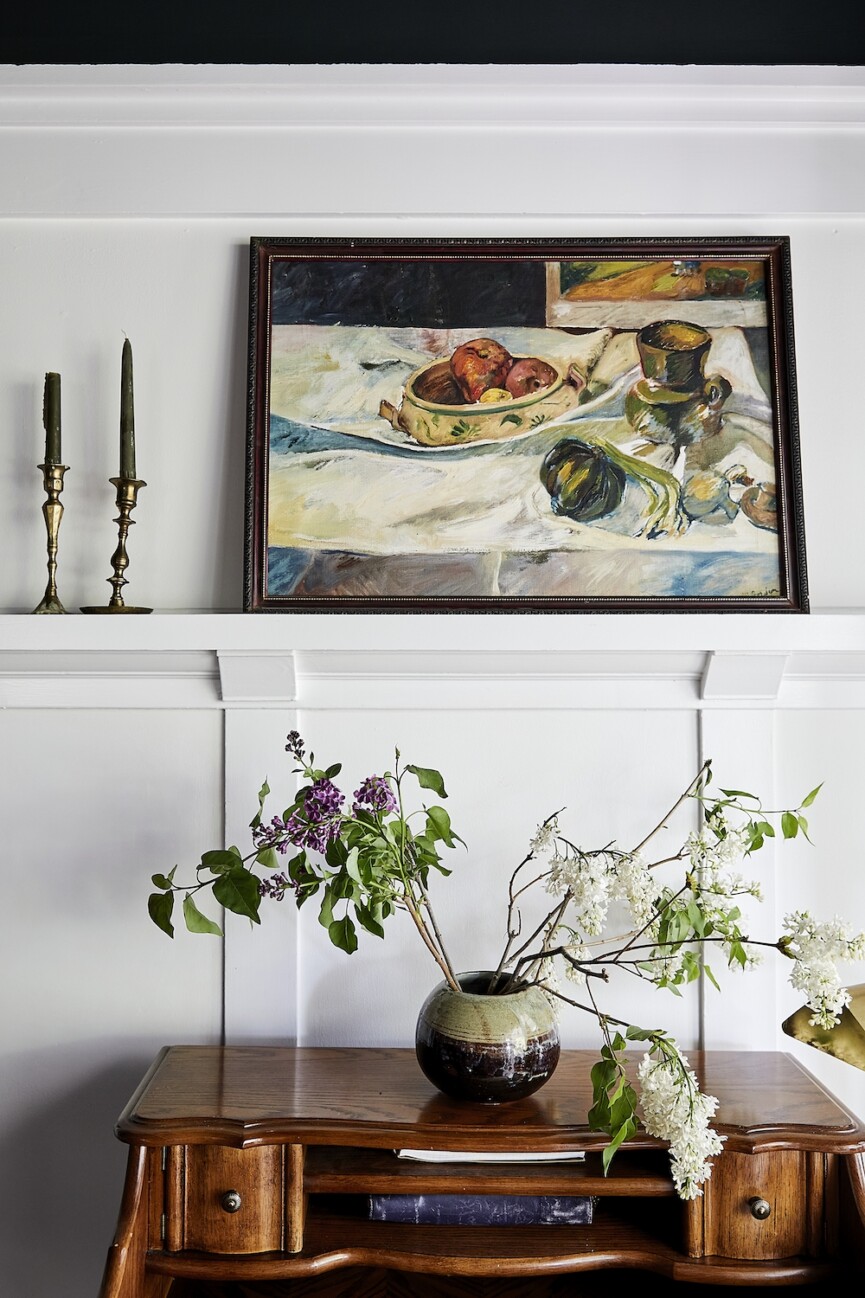
But first, if you haven’t ever flipped a home before and are looking to enter a hot market, Haller recommends taking a little time to reflect and question if it’s a good option for you. “I actually see flips as a red flag. But for every good flipper, there are 10 terrible ones and the work I see done most of the time is usually of bad quality, bad taste, and is sometimes unsafe.”
A few key things to consider before deciding whether or not to flip:
- Check the permit history while in escrow. “It’s easily available information and it would be a tell-tale sign or red flag if work was done the right way or the wrong way,” says Haller.
- Hire a good agent. Ask around—it might take a little time to connect with the right agent, but the effort you put in upfront will pay dividends. Haller emphasizes: “Be thoughtful in who you work with. It matters.”
- Find character. “Look for inherent charm,” says Haller. By this, she means original windows, moldings, and floors. Once you find character, she concludes, you’re well on your way to a good flip.
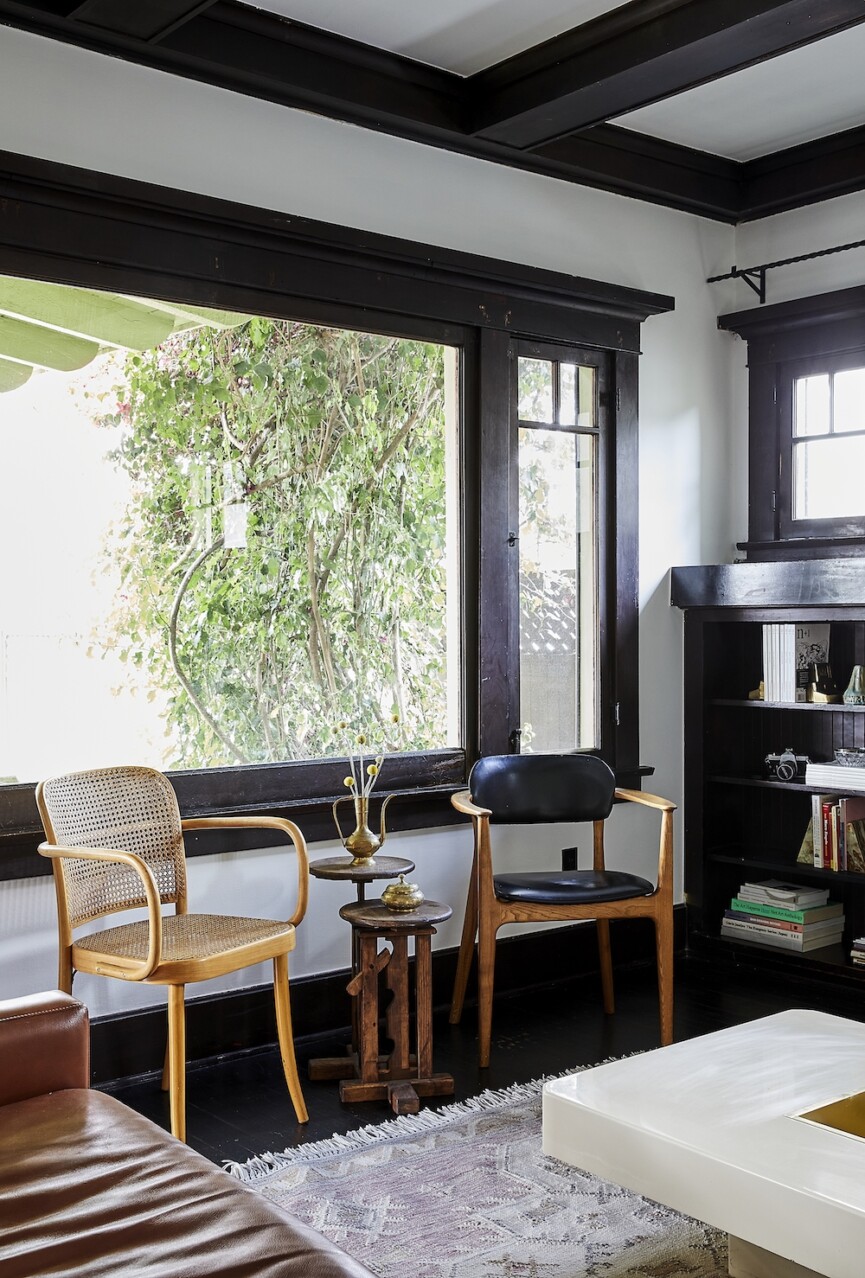
Let’s dive deeper into the red flags to look out for. What questions should homeowners ask themselves before purchasing a fixer-upper?
Haller shares a laundry list of questions that every future homeowner would be wise to ask themselves when purchasing—fixer-upper or otherwise.
- How close does it sit to the street?
- What are the views like out of the window?
- Are there trees? Can you plant some?
- How busy is the street?
- Are you near anything unhealthy or unsafe like a freeway?
- Are you too close to a commercial area or a gas station?
“These are the things that will cap your spirit and you cannot do anything about it. They will also limit the financial upside of your project,” notes Haller.
On the flip side, once you’ve considered all potential red flags, remember this truth: “You can change anything about a house if you want to,” says Haller. Foundations are fixable problems, she wisely adds. Of course, there will likely be some added expense and time to your project, but seeing the potential and knowing the challenge can be solved will likely be to your benefit.

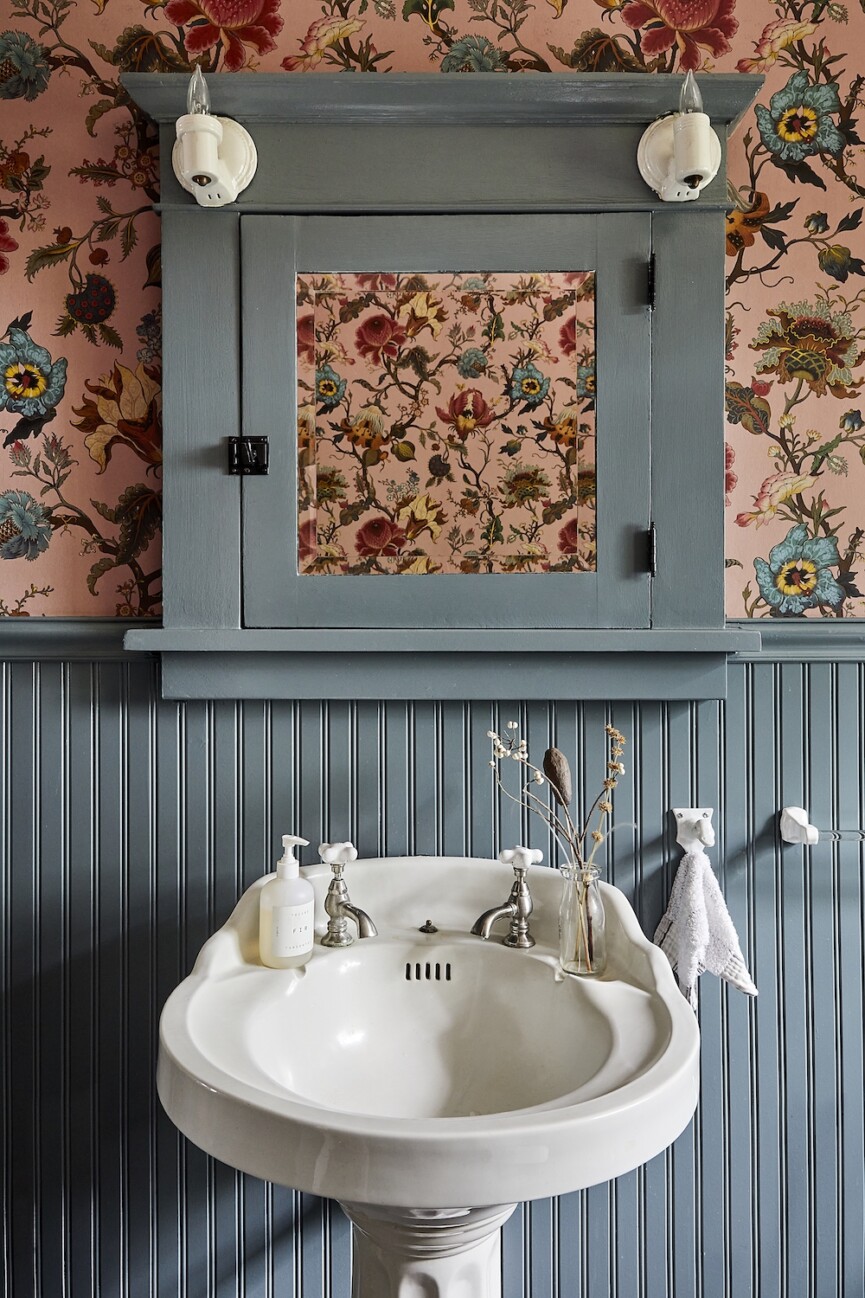
As far as home renovation tips go, what projects and tasks should be prioritized first?
It might come as a surprise (it did to this writer), but Haller advises approaching your renovation from the inside out, beginning with the home’s structural elements. Foundation, framing, then rough plumbing and electrical, roof, doors, and windows. Last but not least, she says to address the finish work (tile paint, cabinetry) at the end of your renovation.
Haller notes that many people go into a project wanting to see where they’re spending their money—but that can lead you astray. “I know a lot of people want to immediately update their bathrooms and kitchens without addressing the structural issues that exist in a home. However, your big investment is at risk if the structure of the home is not sound,” she warns.
The easiest (well, most streamlined) way of making this happen? Prioritize getting good inspections with people you trust. It’s one of the hardest parts of any remodel, Haller says: “finding good partners you can trust.”

So we have the home’s structure secured. How do you approach your design plan?
Haller lets emotion lead the way, asking herself the following:
- What do I want to feel in this room?
- Where is the gravity in the room?
- Is it going to come from a color or some element in the room?
- Where am I going to fall in love in this house?
The process of reflecting upon and answering these questions provides you with a strong framework to begin. From there, Haller will take out anything that she feels doesn’t support that vision. “If I am working with a Craftsman house and there are built-ins and carpet from the 80s, I rip it out. If there are textured ceilings from the 60s I scrape them off.”
This is one of her favorite parts of the remodeling process because inspiration abounds beneath old floors and opportunity can be found at every turn. and opportunity abound beneath old floors or behind any door. “I go back to 0 and get a sense of who the house was before adding to her.”
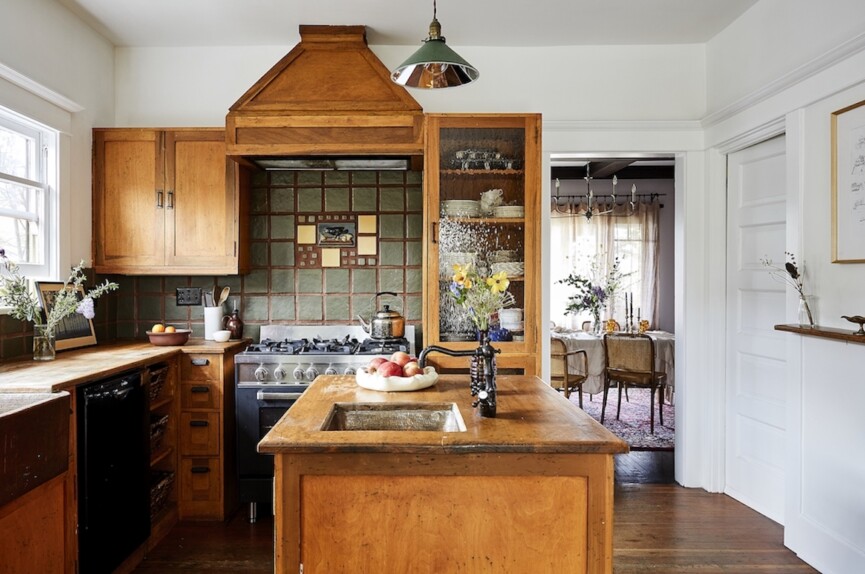
We Love that process and approach to a project! But If You had to pinpoint any one tip that can transform a renovation or flip, what would it be?
As with most things in life, you reap the most reward when you approach anything with patience. “Take the time to really think about it and have a plan,” Haller advises. If you can, she says it’s best to work with an architect, draftsman, or designer. And—while she hates to add this—she cautions against making choices based on what your contractor shows you.
A key distinction: “Contractors are not designers,” says Haller. “Do your own research and find your own materials or hire someone to help.”
When you approach anything with patience, you give yourself the added benefit of time to conduct research. This, Haller says, is key. “Bad choices covering up more bad choices isn’t a good fix. I would suggest saving a little money and hiring someone to help. It’s important to be thoughtful, even on a budget.”
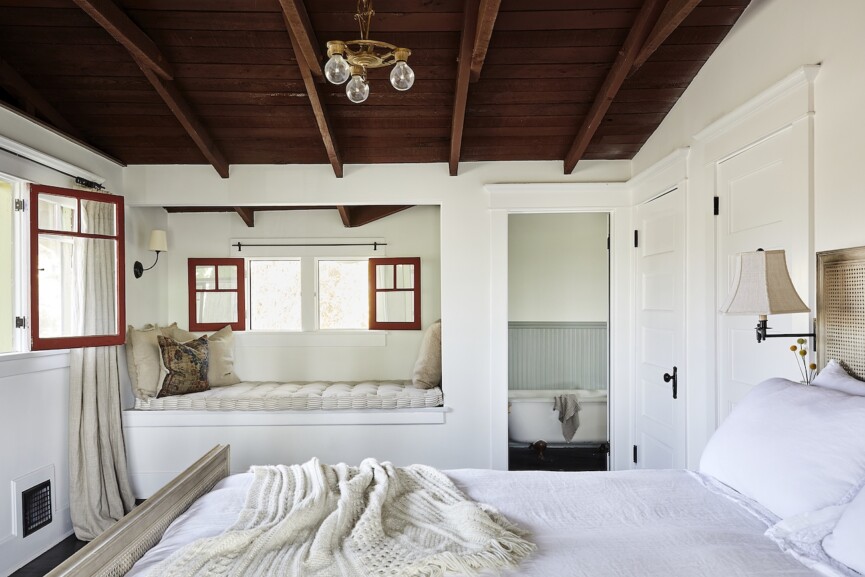
What are your favorite ways to create maximum impact while still keeping costs low?
Of course, staying within budget is the goal—and coming under is the dream. Haller’s favorite ways to make that happen? She shares her secrets on the areas of focus that can create the most significant upgrade for the lowest cost.
- Paint is #1. An entire home can change with a strong paint palette.
- New flooring. There are good options at all price points and bad flooring sets the tone for everything.
- Bathroom fixtures and hardware. These can change and be swapped out easily.
- Drapes and lighting. Both are easy ways to completely turn a room around. Custom drapery is lovely, but really beautiful drapery can be found off the shelf as well.
- Opt for wallpaper. Wallpaper is one of my favorite transformational materials. It offers emotion and inspiration and goes up quickly. It isn’t that expensive to buy, and if you want to you could do it yourself. Wallpaper in combination with new paint is a HUGE transformation.
With good taste and the right eye, Haller says, you don’t need to spend a lot of money. “So many of the lights in my home were something I found at a reuse or salvage sale for $10 and I just loved them.”
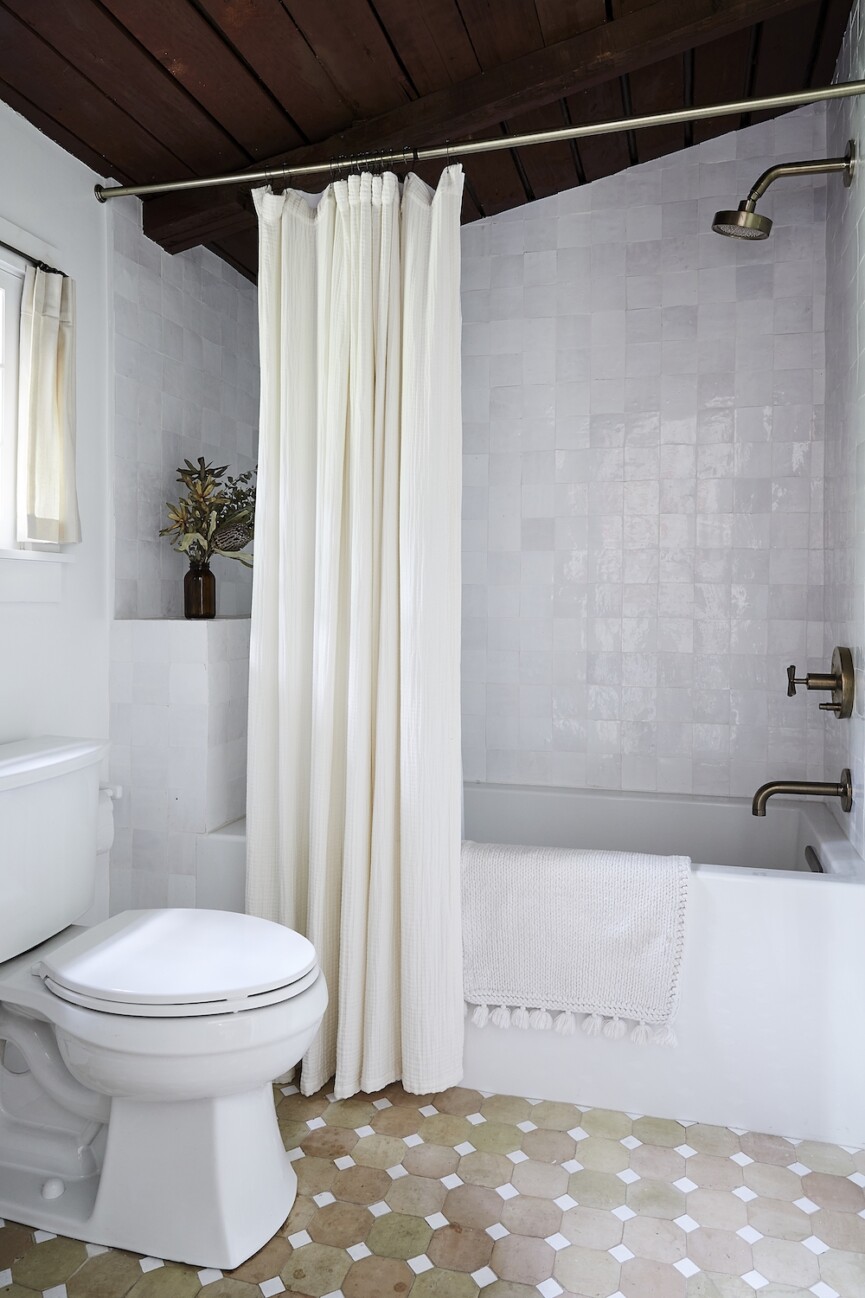
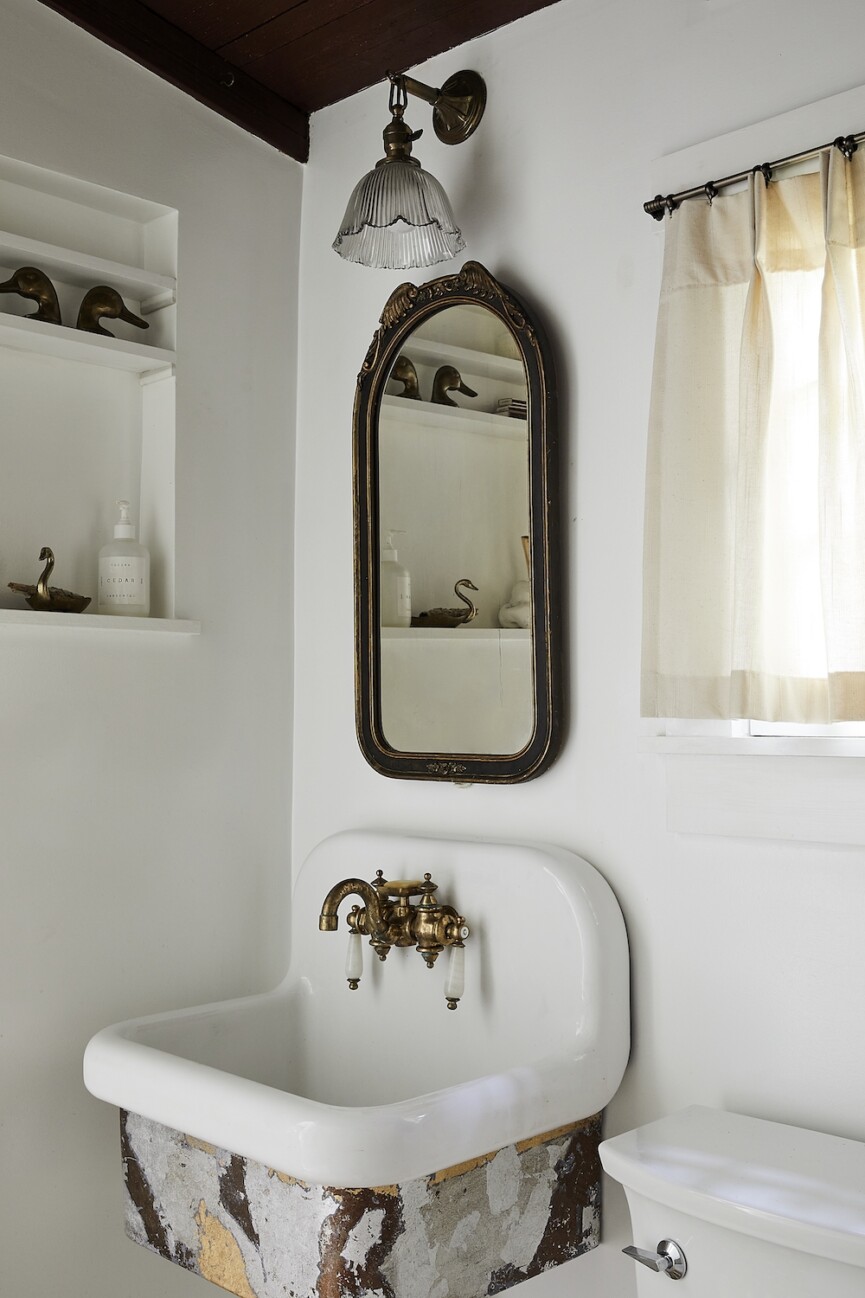
With the budget settled, what’s your favorite way to save time on a project?
Haller is all about the mini makeover. Reflected in her list above, she lauds wallpaper, paint, and lights for their transformational effect. “If you aren’t working with a designer, do the research to pick colors that work. Try lots of options, putting two colors on a wall to select from isn’t going to work. I often put 10 options on a wall.”

What are your favorite sources for affordable renovation materials and décor?
Haller steers clear of big box renovation stores and instead finds more inspiration in local tile shops. “If you need to buy electrical tape and lightbulbs and HVAC filters, by all means, go.” But, she says, smaller, more specialized stores can be more helpful. “They’re experts. They have options at all price points and are usually very happy to help you come up with a story for your home.”
Keep small businesses in business, Haller emphasizes.
Below, Haller details more of her favorites.
- Etsy. It’s filled with makers. You can buy wonderful lights as well as authentic vintage.
- Olde Good Things and Pasadena Architectural Salvage. I LOVE an architectural salvage. I buy windows and doors here, lights, and hardware. Most towns have one.
- Habitat for Humanity. I have bought plenty from second-hand building stores. You have to get lucky, but the hunt is fun.
- Village Lagoon Tile, Heath Tile, and Arto Brick. Lots of lovely tile brands have outlet areas where they sell second quality. Follow your favorite suppliers on Instagram and pay attention to what they’re offering.
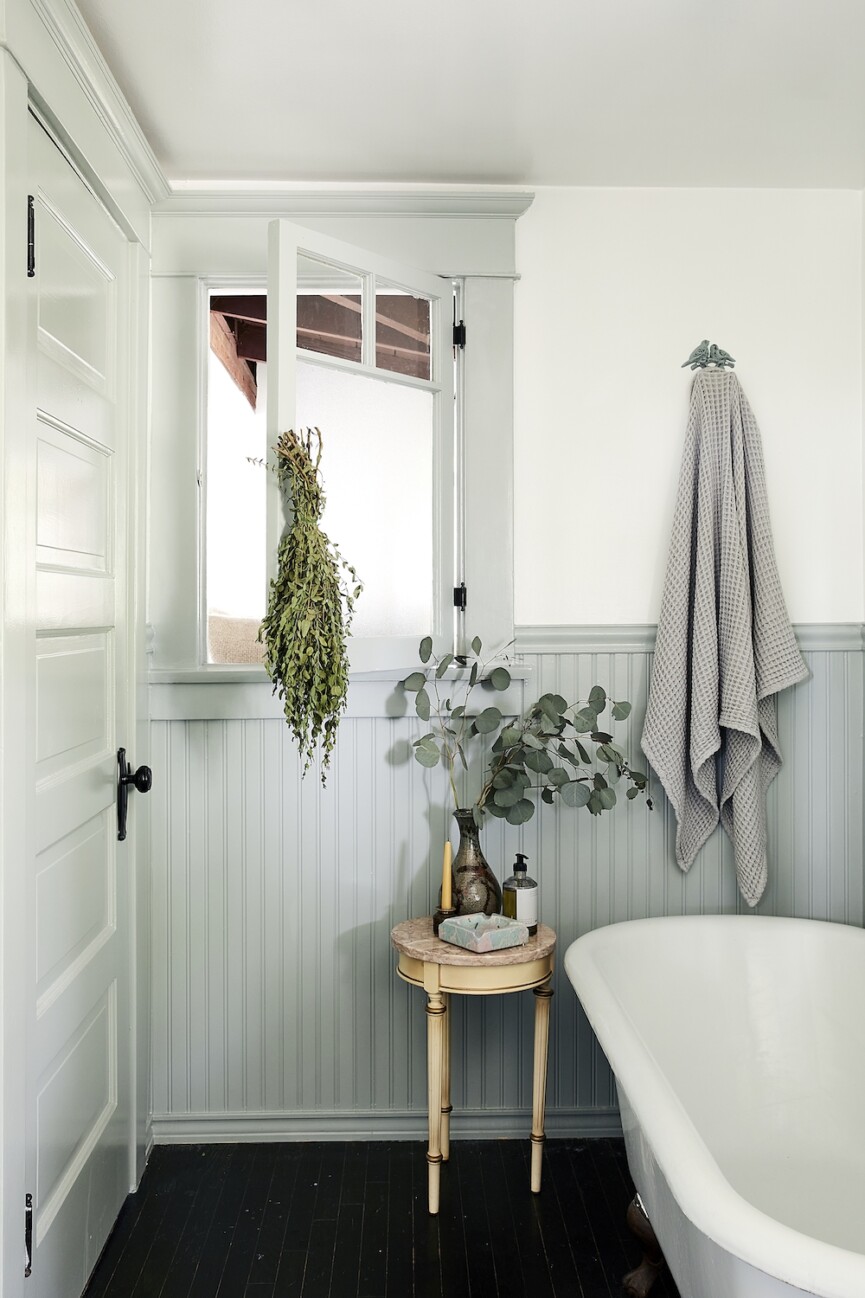

Which projects would you give homeowners the green light to DIY?
“I think it all depends on your ability to overlook mistakes you might make,” says Haller. She suggests sitting down and reflecting on what you value most: Time, saving money, or a final result that looks good and that you’re confident was done correctly. From there, you can decide what is and isn’t worth the effort.
She illustrates this further: “Sometimes, time is more valuable. The truth is you can do anything, you just have to learn it.”
YouTube is one of her go-to resources—but know that it can lead you astray. “I’ve changed lights and outlets by watching YouTube videos,” admits Haller. “I’ve also electrocuted myself doing it.”
Below, Haller shares her cheat-sheet for what should be left to the pros:
- Anything involving gas or electrical work.
- Stripping paint and wood.
- Height.
- Drywall mud. (Don’t kill yourself—this is hard!)
- Demo. TV shows make it look fun to swing a hammer into a wall, but demoing is hard and dirty work.
But even when you leave a project in the hand of professionals, Haller can’t emphasize this enough: “No one will care as much as you do. Stay engaged in the process, watch the work being done, and ask questions.”






